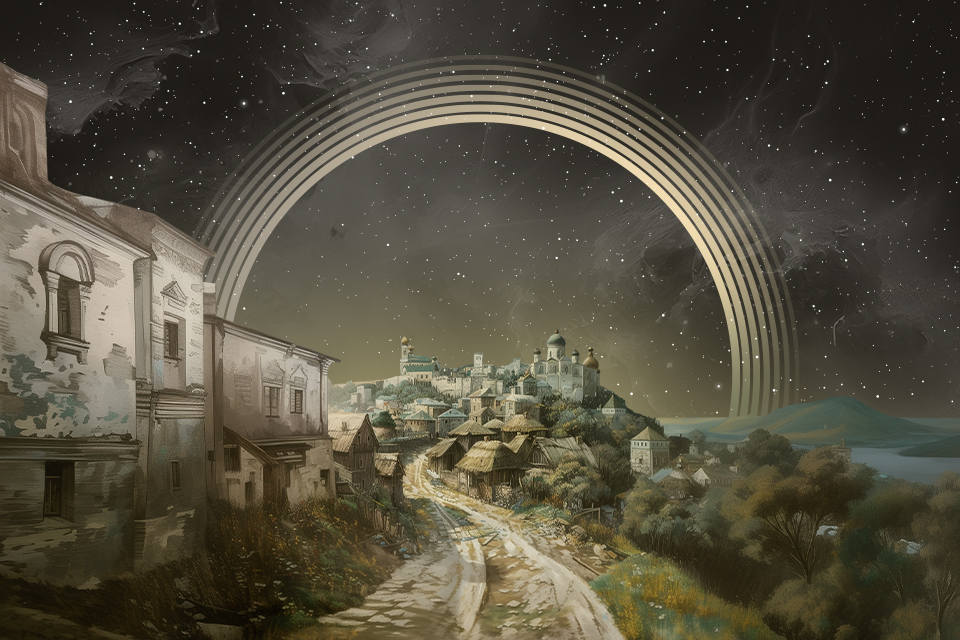Not all historians agree with the official date of Kyiv’s foundation, calculated in the 1970s by Soviet ideologists. In any case, we already know for sure that in 482 AD (by the way, the chronology “from the Nativity of Christ” appeared several centuries later) there was a populous settlement on the banks of the Dnipro River, whose inhabitants were engaged in trade, crafts and agriculture. Have you ever wondered how different the starry sky above their heads was from the one we see today?
In the more than 1,500 years that have passed since then, the contours of the constellations have changed only slightly. Only the closest luminaries (primarily the brightest ones — Sirius, Arcturus and Altair) have moved so much that it could be noticed with the naked eye, and only if you know what their position was then and what it is now. But the conditions of their visibility at different times of the year differed markedly. First of all, this concerns the zodiacal constellations in which the Sun, Moon and planets move. We can say that in those days their location was closer to the astrological “zodiac signs”. Four centuries before the point of the winter solstice had moved from Capricorn (where astrologers of the past used to see it) to Sagittarius, but it was still in its eastern part. Scorpio, which is actually the “lowest” in our days, rose much higher above the horizon for the inhabitants of the northern latitudes at the end of the fifth century, and the star Antares was visible in Kyiv in much the same way as it is now in Crimea.

This was even more true of the constellations that are commonly called “spring” constellations, i.e. those that are at their highest culmination at midnight in spring, while the Sun, on the contrary, passes them in the autumn months. The Spica (α Virgo), whose declination is now slightly less than -11°, was located almost at the celestial equator in the fifth century. In those days, on April evenings, the brightest globular star cluster in the Earth’s sky, ω Centauri, could be seen low over the southern horizon in Kyiv. Now it is visible as far south as the latitude of Tbilisi.
In contrast, the visibility conditions for the “autumn” objects were much worse. Of the entire Sculptor constellation, which can still be classified as “exotic southern”, only its small northern part appeared above the horizon at the latitude of Kyiv, and the bright galaxy NGC 253 did not rise more than 6° above the southern horizon. The bright Fomalhaut, a regular visitor to our sky from July until almost mid-winter, was visible at a maximum altitude of 2.5°.
Most readers have already guessed that all the changes described above are caused by precession, the slow rotation of the Earth’s axis around the perpendicular to the ecliptic. Its most obvious consequence is the change in the North Star, since the pole of the world (the imaginary point where the earth’s axis intersects the celestial sphere) is also constantly moving. However, a thousand and a half years ago, the inhabitants of Kyiv could already use the same Polaris as we do: it had already come closer to the “true” pole than Kohab (β Ursa Minor), which “acted” as the Polaris at the beginning of our era.
For relatively short periods of time (no more than two thousand years), precession has little effect on the visibility of the constellations we conventionally call “summer” and “winter” constellations. Therefore, Orion, Taurus, Gemini, and the Charioteer were visible in ancient Kyiv in much the same way as they are now. But Sirius, the α of the Canis Major, was a little higher on the horizon then. Here, it was the matter of its so-called proper motion against the background of more distant stars, caused by the rotation of galactic objects around the centre of the Milky Way in different orbits at different speeds. For the brightest star in the night sky, it is directed almost exactly to the south, so it gradually “crawls” out of the range of view of observers in our latitudes.
In general, the night sky observations over ancient Kyiv was much better from the astronomical point of view than it is now — it was not spoiled by street lighting, thousands of artificial satellites, or pollution from industrial emissions (though in winter, they were partially “compensated” by smoke from numerous wood-burning stoves). Meanwhile, the invention of the first optical instruments for astronomical observations was still more than a thousand years away…
Earlier, we wrote about the peculiarities of the New Julian calendar, which is now used by the Orthodox Church of Ukraine.

